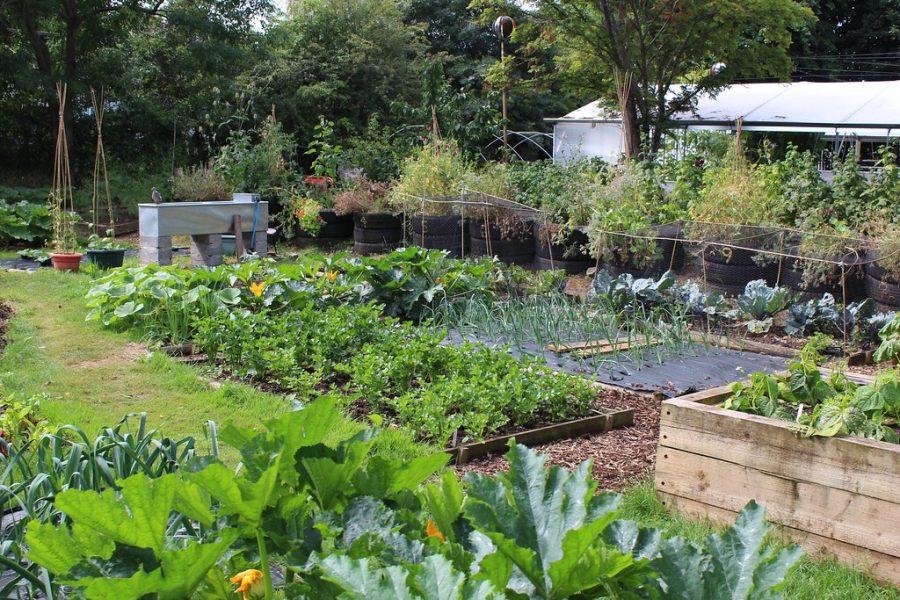Christopherson: Eliminating Big Oil’s Impact, One Garden at a Time
August 27, 2019
This summer, I participated in a literature seminar on oil culture, a course about the ways in which oil supports and even fuels modernity. Unsurprisingly, our readings and discussions about plastic pollution, cancer, environmental racism and other issues associated with crude oil and its products have been discouraging beyond words. So, like any other halfway optimistic college student, I decided that my coping strategy would be to reduce my own oil consumption as much as possible — minimizing my sense of personal guilt for the potentially very bleak future ahead. Because I do not own a car, growing my own food seemed like the next big change I could implement in my own life.
Mass food production relies on the oil industry and contributes to carbon emissions and climate change in several ways. Most obvious is the transportation of food from farms to grocery stores to homes, and sometimes to and from several additional locations depending on the product and how heavily it is processed. These journeys are frequent and can span thousands of miles. Think of the fuel it takes, for example, to ship bananas to Salt Lake City from Mexico often enough to keep them in our stores every day, all year round.
But transportation is just the tip of the iceberg. Growing food adds to fossil fuel emissions, too, since pesticides often consist of chlorinated hydrocarbons made from crude oil. So much of our food is packaged. Even citruses and other produce that come in natural packaging are commonly shipped and sold in plastic. We take produce home in long, gossamer bags with no plan for their ongoing purpose — except maybe collecting them in our closets like small, personal landfills. For everything from fruit to frozen dinners, plastic is the more subtly oil-guzzling vehicle from the places our food is produced to the places we eat it.
Growing your own produce, or even buying it locally, is a significant way to reduce a carbon footprint. With that in mind, it occurred to me that Salt Lake City might have a community garden. After a quick Google search, I learned about Wasatch Community Gardens, a local organization that provides not only gardening space but also “educational programs and community events to empower people to grow, harvest, preserve and prepare fresh, healthy food.”
As it turns out, gardening can bring about more than an eased conscience for those of us concerned for the well-being of our planet. There are physical health benefits to gardening. Planting, weeding, watering and harvesting a plot requires exercise. It allows for choices of fertilizer, pesticide use and longer ripening times before harvest, which increases nutrient richness. I don’t think it’s too far a stretch to assume that a few hours of outdoor, physical labor each week could be a powerful stress reliever and a productive way to unplug. It is also a way to strengthen communities, develop meaningful life skills and take real ownership over the food we put in our bodies.
For one, caring for a neighborhood garden demands communication, patience, leadership and teamwork. Wasatch Community Gardens states their core values are community, sharing and stewardship — all attitudes which facilitate both the maintenance of a garden and tighter-knit relationships among neighbors. These are exactly the kinds of values we hope children will learn in school — so Wasatch Gardens has programs that expose elementary-aged kids to gardening through on-campus gardens, field trips and summer camps.
Equally significant, WCG’s Green Team Farm Project empowers women experiencing homelessness. Program participants “study organic agriculture techniques, rediscover and cultivate a solid work ethic and work to restore their sense of confidence,” according to the WCG website. The program is located on the west side of Salt Lake City, deliberately chosen in an effort to “revitalize an underutilized urban area.” The organization also hosts public gardening workshops and offers numerous volunteer opportunities for people without plots in their gardens.
If any of this — sustainability, community or health — sounds like something you could use a little more of, starting or joining a garden is well worth your time. Wasatch Community Gardens has public garden space all over the Wasatch Front, including several gardens in Salt Lake City. Plots in most gardens do require an application and cost about $35/year, plus three to five hours of maintenance each week throughout the spring, summer and fall. If that seems like an intimidatingly serious commitment, the University of Utah’s Edible Campus Garden provides regular opportunities to try gardening without being responsible for your own plot. You can learn more about the campus garden here and sign up for their newsletter here to get weekly information about volunteer times and events.












